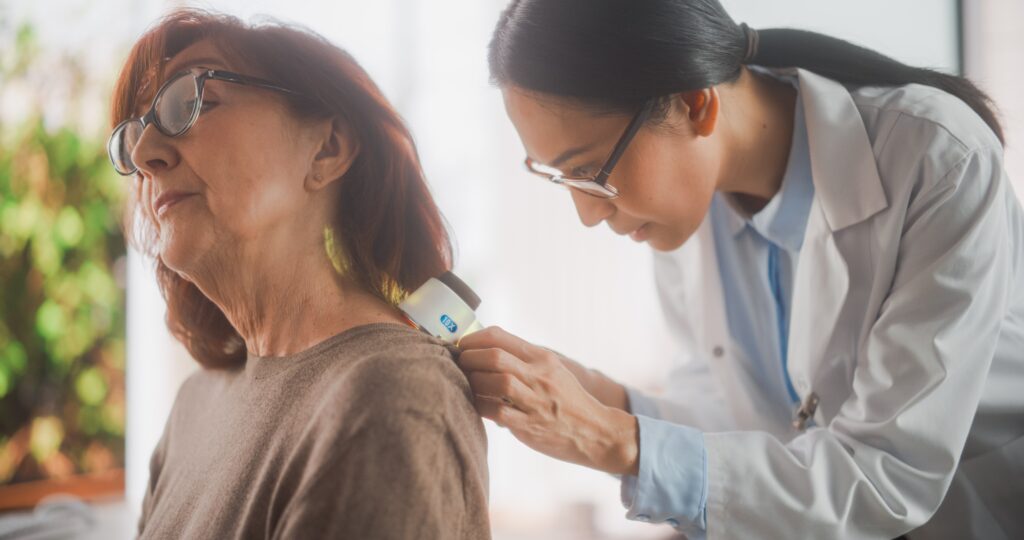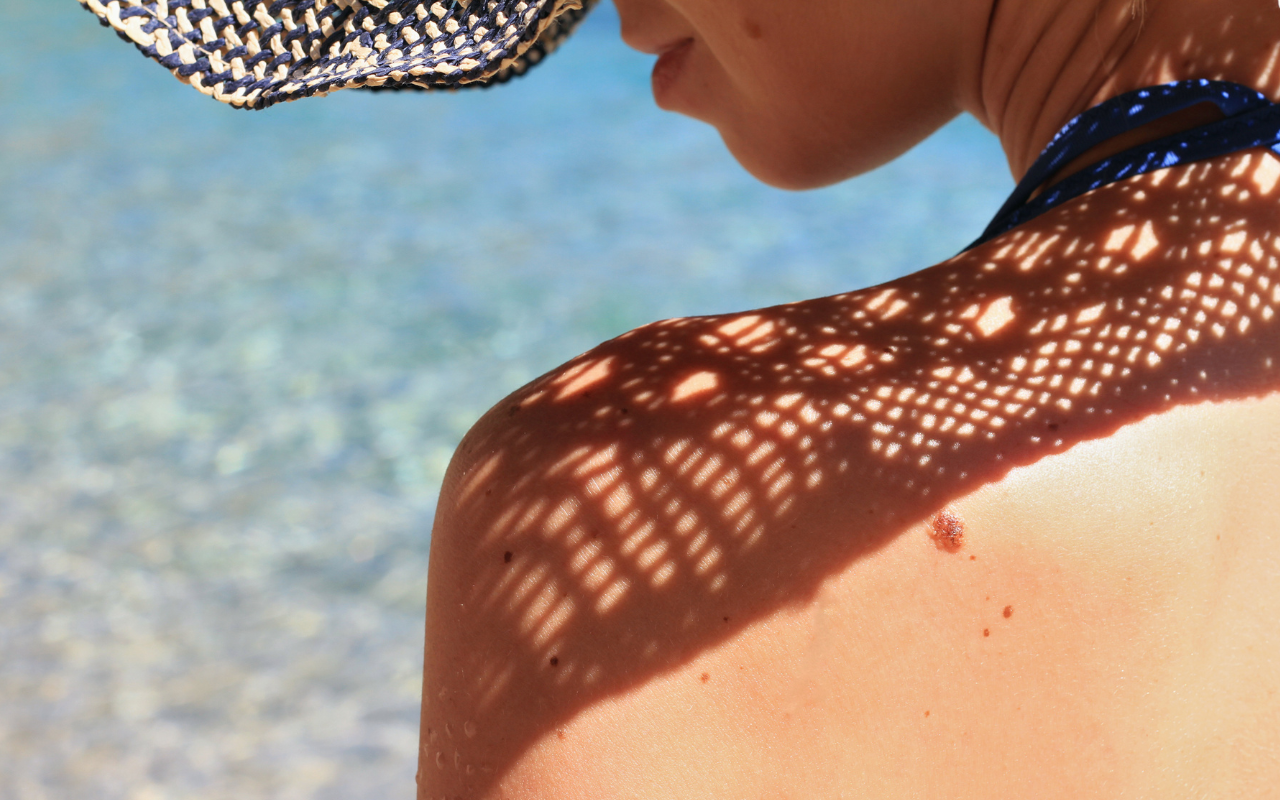Although melanoma is often referred to as Australia’s national cancer, an organised screening program is recommended for cost effectiveness and diagnosis.
Australians are generally known for their love of the outdoors — sun, surf and swimming. It’s one factor, including high solar ultraviolet radiation, that leads to us having the highest incidence per capita of melanoma in the world.
In a new perspective in the Medical Journal of Australia, the way skin cancer is diagnosed in this country is put under the microscope.
Two-thirds of Australians will be diagnosed with keratinocytic tumours (including basal cell and squamous cell carcinomas). Even though Australia has come a long way in diagnosis and treatment, one Australian dies approximately every six hours from melanoma.
One in three Australians aged between 45–69 years has a routine whole body and skin check every year. However, in the perspective, the authors question whether the current skin cancer screening model is the most effective in detecting melanoma.
Skin cancer costs the health care system almost $2 billion annually, making it Australia’s most expensive cancer.

“This form of ad-hoc screening is contrary to national and international recommendations, with both the Australian Government Standing Committee on Screening and United States Preventive Services Taskforce concluding insufficient information on the benefits and harms of skin cancer screening, and lack of data on cost-effectiveness,” the authors said.
“Detection and treatment of melanoma at an early stage is associated with an excellent prognosis, and increased mortality has been demonstrated with each 0.2 mm increment in Breslow thickness at diagnosis.”
“There are geographical and socio-economic inequities in who accesses skin checks, is diagnosed with melanoma, and dies from it, and there is a large variation in the number of surgical procedures per malignant diagnosis by clinical setting and subspecialty,” they said.
Opportunistic screening is recommended by Australian clinical practice guidelines, which revolves around patients or clinicians initiating skin checks rather than population screening or an organised program. For people who’ve had melanoma, a skin check is recommended every 6 to 12 months.
A report calls for “improving early detection and building evidence for a national targeted screening program as a major strategy for reducing the burden of melanoma in the community,” the authors stated.
“Not all Australians need regular skin checks. Targeting early detection efforts to individuals at high risk of developing melanoma can increase benefits and reduce potential harms of screening,” the authors said.
“There are several online validated melanoma risk prediction tools available for the Australian population that facilitate estimation of personal risk of melanoma diagnosis.”
Diagnostic technologies
“Dermoscopy reduces the benign to malignant ratio of excised melanocytic lesions and the number of patients referred for biopsy, but requires training,” the authors said.
New non-invasive diagnostic technologies will be fundamental in improving and standardising diagnostic accuracy.
Already validated technologies include whole body photography (with strict privacy protection) and sequential dermoscopic imaging (for equivocal lesions).
“The quality of skin checks and health outcomes could be improved through the introduction of an organised screening program, by standardising the screening and diagnosis process, including:
- extent of examination: whether special sites (such as scalp, mucosa) are included;
- lesion selection: identification of appropriate lesions for dermoscopy and non-invasive diagnostic technologies;
- criteria for biopsy: it is time to move beyond the common message of “if in doubt, cut it out” and establish monitoring protocols and objective biopsy criteria based on lesion malignancy risk in context of individual patient risk and clinical history — emerging diagnostic technologies mentioned above may assist in creating such an algorithm;
- biopsy technique: different factors will guide the choice of biopsy technique; however, partial and shave biopsies are associated with the underestimation of melanoma thickness by a mean 0.25 mm.”
The authors call for major investment in infrastructure, workplace upskilling and education:
- medical student curriculums to increase dermatology content, specifically including skin cancer diagnosis and management, which should be examinable;
- general practice education to involve expert-level teaching including morphological identification of high-risk lesions (such as amelanotic and desmoplastic melanomas), differentiation from inflammatory dermatoses, understanding of non-invasive technologies and competency assessment;
- increased numbers of dermatologists, and dermatologist upskilling in advanced non-invasive diagnosis (eg, confocal microscopy); and
- effective community education on sun protection and early detection, highlighting the importance of seeking medical review for new or changing lesions.
The authors also call for Medicare reimbursements to be re-evaluated, with differentiation between skin checks and biopsies on item numbers.
Read the perspective in the Medical Journal of Australia.
Subscribe to the free InSight+ weekly newsletter here. It is available to all readers, not just registered medical practitioners.

 more_vert
more_vert
The Nambour trial of sunscreen found that daily sunscreen use halved the rate of new melanomas and there was a stronger and statistically significant effect for invasive melanomas, as per the Abstract from the published paper https://pubmed.ncbi.nlm.nih.gov/21135266/:
“Ten years after trial cessation, 11 new primary melanomas had been identified in the dailysunscreen group, and 22 had been identified in the discretionary group, which represented a reduction of the observed rate in those randomly assigned to daily sunscreen use (hazard ratio [HR], 0.50; 95% CI, 0.24 to 1.02; P = .051). The reduction in invasive melanomas was substantial (n = 3 in active v 11 in control group; HR, 0.27; 95% CI, 0.08 to 0.97) compared with that for preinvasive melanomas (HR, 0.73; 95% CI, 0.29 to 1.81).”
I’m confused- I thought a skin check was an item number 23 or 36 and a biopsy was a 30071? They are different item numbers. I am not sure how they are the same?
Will there also be an Evidence Based Medicine review of the efficiency of Suncreams reducing the incidence of melanoma and Basal Cell Carcinoma ?
The Nambour Study failed to demonstrate enough statistical weight for Melanoma reduction.
Compare this to Squamous Cell Carcinoma, Photoaging, Pain of Sunburn where Evidences are very clear ….